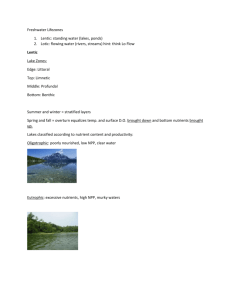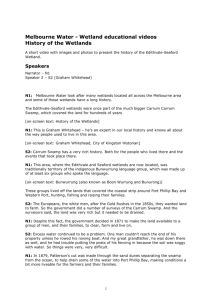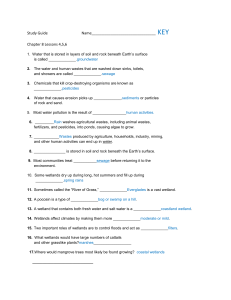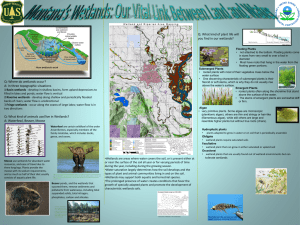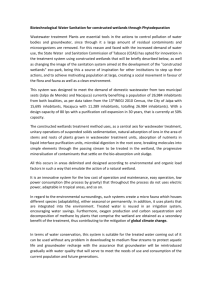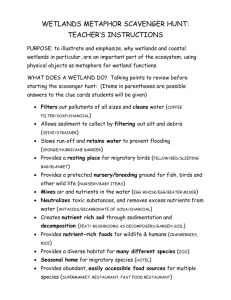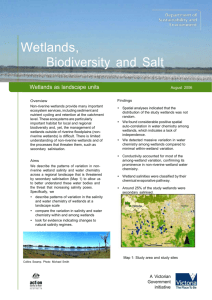What Are Wetlands? - Moore Public Schools
advertisement
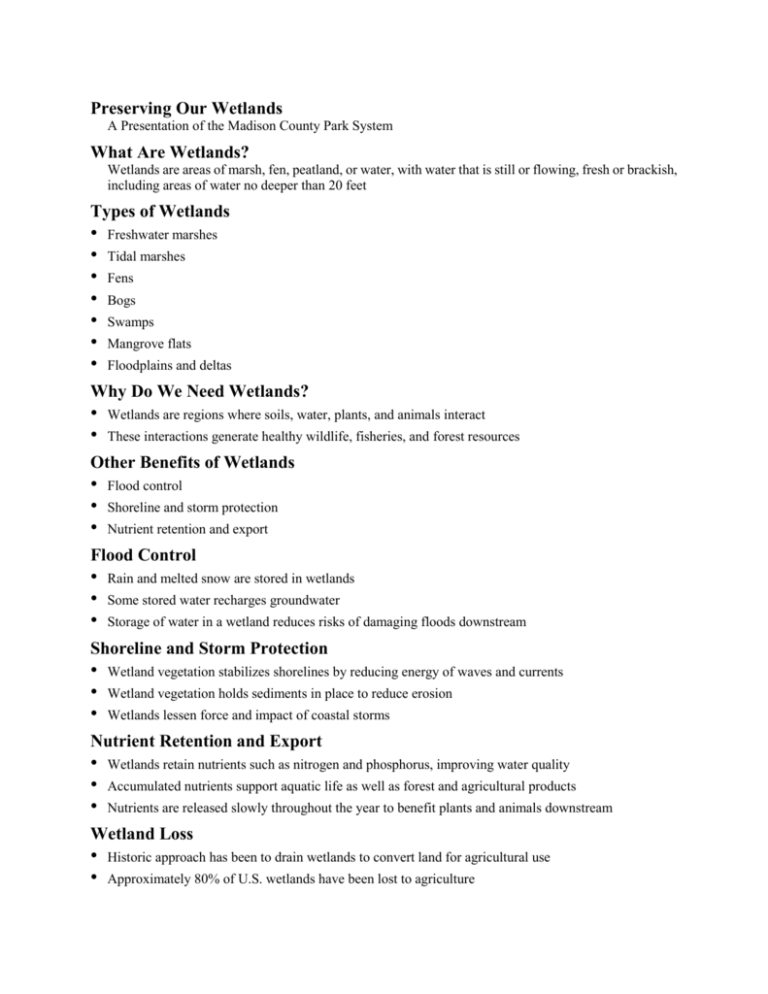
Preserving Our Wetlands A Presentation of the Madison County Park System What Are Wetlands? Wetlands are areas of marsh, fen, peatland, or water, with water that is still or flowing, fresh or brackish, including areas of water no deeper than 20 feet Types of Wetlands • • • • • • • Freshwater marshes Tidal marshes Fens Bogs Swamps Mangrove flats Floodplains and deltas Why Do We Need Wetlands? • • Wetlands are regions where soils, water, plants, and animals interact These interactions generate healthy wildlife, fisheries, and forest resources Other Benefits of Wetlands • • • Flood control Shoreline and storm protection Nutrient retention and export Flood Control • • • Rain and melted snow are stored in wetlands Some stored water recharges groundwater Storage of water in a wetland reduces risks of damaging floods downstream Shoreline and Storm Protection • • • Wetland vegetation stabilizes shorelines by reducing energy of waves and currents Wetland vegetation holds sediments in place to reduce erosion Wetlands lessen force and impact of coastal storms Nutrient Retention and Export • • • Wetlands retain nutrients such as nitrogen and phosphorus, improving water quality Accumulated nutrients support aquatic life as well as forest and agricultural products Nutrients are released slowly throughout the year to benefit plants and animals downstream Wetland Loss • • Historic approach has been to drain wetlands to convert land for agricultural use Approximately 80% of U.S. wetlands have been lost to agriculture • Approximately 50% of wetlands worldwide have been lost Impacts of Wetland Loss • • • Floods—more damage to areas that were once wetlands Water quality—more sediments, nutrients, and contaminants downstream Animal habitats—loss of habitats for animals that inhabit wetlands




